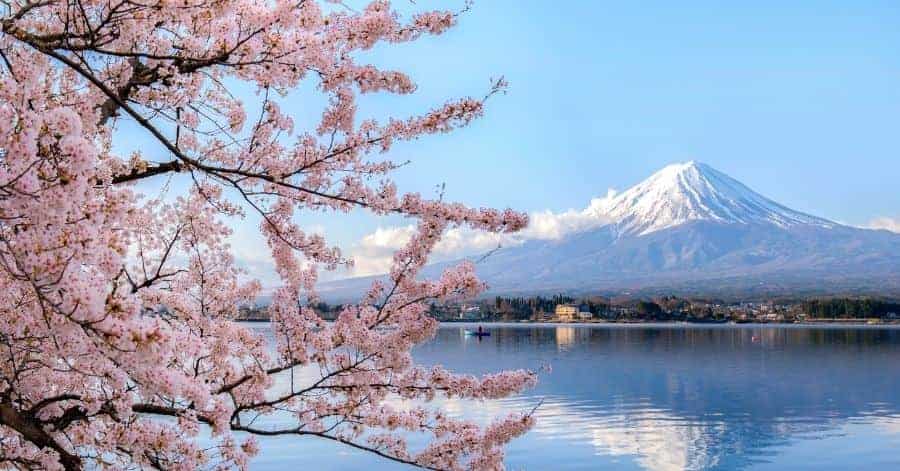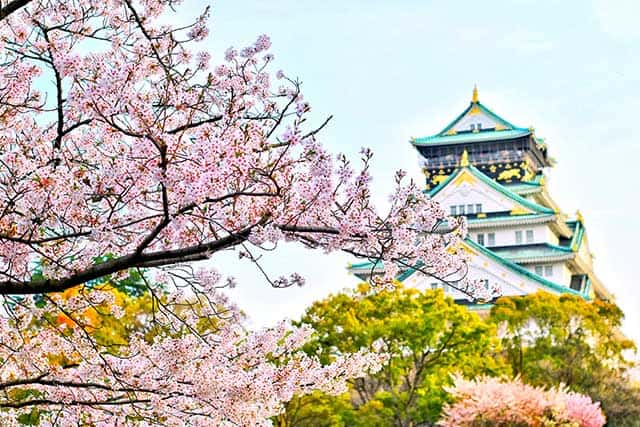There are tons of non-touristy things to do in Tokyo. Tucked away on the island of Honshu, this metropolitan city has many hidden gems worth visiting, such as the iconic Gotoku-ji Temple in Setagaya City. And let’s not forget the historic Nezu Museum in Minato City.
In addition to exploring Tokyo’s secret attractions, visitors can engage in activities that are not typical touristy. You will be surprised to find that Tokyo has more to it than shrines and neon-lit skyscrapers. Our handpicked activities will allow you to make the most of your trip and learn more about this metropolitan city.
Also Read:
- Free Things to Do in Tokyo 2024
- Best Family-Friendly Things to Do in Tokyo
- Best Fun Things to Do in Tokyo 2024
- Explore the Hidden Gotoku-ji Temple
- Stuff Your Belly in Yanaka Neighborhood
- Catch 360° Views of Tokyo from Shibuya Sky
- Try Black Eggs of Owakudani
- Learn About Tokyo's Culture at Zojo-ji Temple
- Listen to Wind Chimes at Kawagoe Hikawa Shrine
- Learn a Thing or Two at Nezu Museum
- Ride the Rollercoaster at Asakusa Hanayashiki
- Buy Fake Food from Kappabashi
- Sip Matcha Tea at Hama-rikyu Gardens
- Spot Your Favorite Animals at Edogawa Natural Zoo
- Visit the Iconic Owl Cafe Tokyo Akiba Fukurou
- See What The Fuss Is All About Bank of Japan Currency Museum
- Get Lost in the Bamboo Forests of Todoroki Valley
Explore the Hidden Gotoku-ji Temple
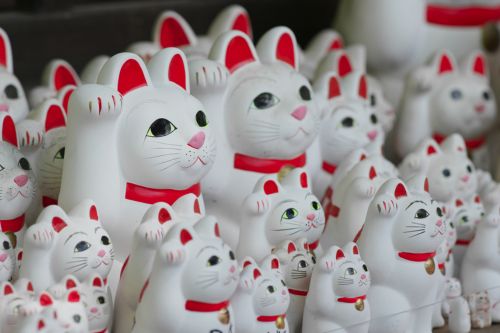
- Address: 2 Chome-24-7 Gotokuji, Setagaya City, Tokyo 154-0021, Japan, Google Map
- Opening Hours: 6 AM – 5 PM
- Social Media: Official Website
Located outside the center of Tokyo and tucked away in Bunkyo special ward, Gotoku-ji Temple is considered the origin of Maneki-Neko, aka lucky cat. Legends say a cat invited Li Naotaka inside a temple to shelter from a thundershower. The Hikone domain lord rebuilt the temple to express his gratitude to the cat.
People often buy Maneki-Neko statues from a souvenir shop at the temple and offer them. Hence, you will find more lucky cat figurines every time you visit this shrine. Likewise, locals pray at the shrine, wishing for luck, prosperity, and happiness. You can also make a wish and see if it comes true.
Stuff Your Belly in Yanaka Neighborhood
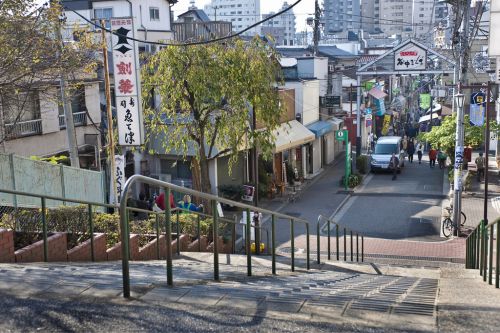
- Address: Taito City, Tokyo; Google Map
- Opening Hours: 10 AM – 6 PM
- Things To Do: Food Tour, Sightseeing
Home to artisans and temples, the Yanaka neighborhood takes visitors back to old Tokyo. It is one of the few towns spared from bombing in the Second World War. You will love its rustic charm and the simple lifestyle of the locals. The district’s simplicity and old town ambiance have made it one of the hidden Tokyo attractions.
This neighborhood is within walking distance from Ueno Park, Nippori Station, and Sendagi Subway Station. Visitors can stroll around the shopping street of Yanaka Ginza and purchase items at cheaper prices. Likewise, they can learn about Yanaka’s cultural activities and history at the Yanesen Tourist Information & Culture Center and Yanaka Cemetery.
Catch 360° Views of Tokyo from Shibuya Sky
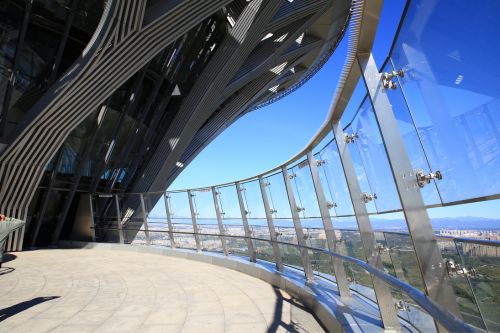
- Address: Japan, 150-6145 Tokyo, Shibuya City, Shibuya, 2 Chome−24−12 14, Tokyo; Google Map
- Opening Hours: 10 AM – 10:30 PM
- Entrance Fee: ¥2,500 (Adults), ¥2,000 (Junior High and High School Students), ¥1,200 (Elementary Students)
While Tokyo Skytree and Tokyo Tower are crowded with tourists, many likely haven’t heard of Shibuya Sky in Shibuya City. This 229-meter open-air observation deck provides breathtaking 360-degree views of Tokyo. It is located on Shibuya Scramble Square Tower‘s 47th floor and is open till 10:30 PM.
Shibuya Sky has three zones: Sky Gate, Sky Stage, and Sky Gallery. The Sky Gate is a transition space from the 14th floor to the 45th floor. On the latter floor, visitors will watch Shibuya City from a rooftop observation space. 46th floor has an indoor observation corridor. Furthermore, this observation tower has a rooftop bar, cafe, and souvenir shop.
Try Black Eggs of Owakudani
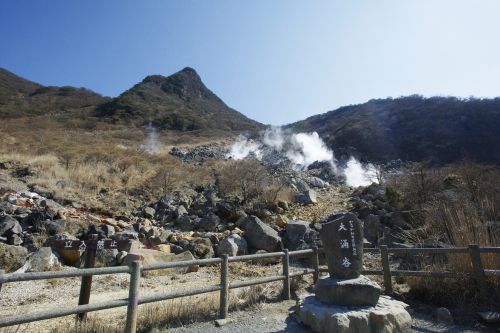
- Address: 1251 Sengokuhara, Hakone, Ashigarashimo District, Kanagawa 250-0631, Japan; Google Map
- Opening Hours: 9 AM – 5 PM
- Things To Do: Mt. Fuji Sightseeing, Experiencing Onsen, Food tour
Located between Sounzan and Togendai, Owakudani is slowly becoming a popular tourist spot. It is a volcanic valley with many hot rivers, springs, and active sulfur vents. Moreover, visitors will see sulfur smoke all around, giving this place a dreamy look. On good days, they will catch fantastic views of Mt. Fuji.
You must try Owakudani’s black eggs cooked in hot spring pools. These eggs are boiled for at least sixty minutes and get their black shells from the water’s iron and sulfur. You can trek from the Hakone Ropeway Station to the egg-boiling site. If trekking is tiresome, you can buy black eggs at local stores for ¥500 for five eggs.
Learn About Tokyo’s Culture at Zojo-ji Temple
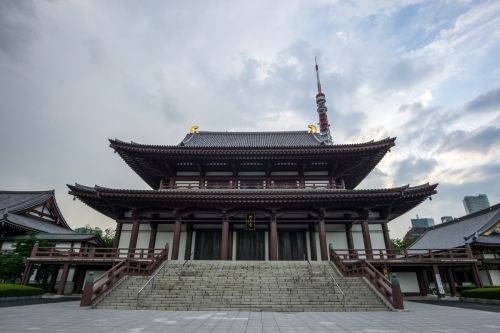
- Address: 4 Chome-7-35 Shibakoen, Minato City, Tokyo 105-0011, Japan; Google Map
- Opening Hours: 9 AM – 5 PM
- Entrance Fee: Free Entry
One of the oldest Japanese shrines, Zojo-ji Temple, was built in 1393 and relocated to its present site in 1598. It initially housed 150 grammar schools and 48 smaller temples. Moreover, this sacred Jōdo-shū Buddhist temple houses Sangedatsumon, Daibonsho, Kyozo, Daiden, Koshoden, Ankokuden, and the Mausoleum of Tokugawa Shoguns.
While the main temple offers free entry, visitors must pay ¥700 to enter the Zojoji Treasures Gallery. Its main exhibition is the 1:10 scale model of the Taitokuin Mausoleum, whose original structure was destroyed in the Second World War. Furthermore, the gallery displays Five Hundred Arhat Scrolls, 100 scrolls made by the Edo period painter Kano Kazunobu. The scrolls have themes of arhat’s private lives, sacred beasts, floods, and freezing ponds.
Listen to Wind Chimes at Kawagoe Hikawa Shrine
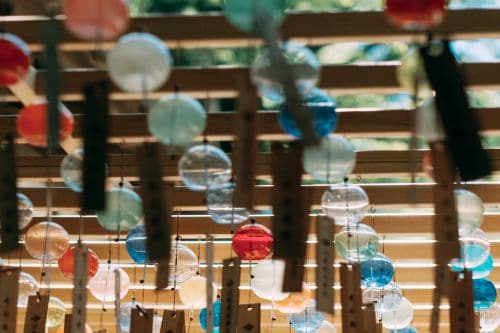
- Address: Japan, 350-0052 Saitama, Kawagoe, Miyashitamachi, 2 Chome−11−3; Google Map
- Opening Hours: 9 AM – 6 PM
- Entrance Fee: Free Entry
Japan has thousands of shrines and cultural sites. However, each temple is unique and carries specific significance. Likewise, Kawagoe Hikawa Shrine is renowned as a destination for those looking for love or marriage. Locals believe praying in this temple brings good luck in marriage and family. You must make a trip to this shrine with your significant other.
The temple holds the Enmusubi Wind Chime Festival every summer. A 10-meter-long corridor of marriage wind chimes with hanging prayers will be displayed, and the shrine will be beautifully decorated with more than 2,000 multicolored wind chimes. Travelers must visit during July or September to hear the melodious sounds of wind chimes and participate in this festival.
Learn a Thing or Two at Nezu Museum
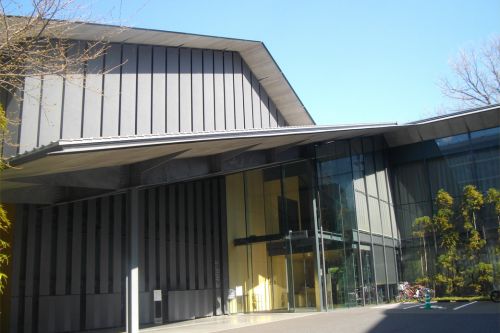
- Address: 6 Chome-5-1 Minamiaoyama, Minato City, Tokyo 107-0062, Japan; Google Map
- Opening Hours: 10 AM – 5 PM
- Entrance Fee: ¥1,600 (Adults), ¥1,300 (Students)
Nothing beats a good old museum visit when planning a trip. So, you might as well include a tour of the Nezu Museum in your Tokyo itinerary. This museum, conveniently located in the Minato District, has collected many pre-modern Japanese and East Asian art pieces. Nezu Kaichiro built this place, which his son, Kaichiro Jr., later expanded.
Nezu Museum has 7,400 works, including 95 important art objects, 91 cultural properties, and seven national treasures. It also holds special exhibitions every other month. Moreover, visitors can learn about its ceramics, lacquer, textiles, painting, and sculpture collections on the museum’s official website.
Ride the Rollercoaster at Asakusa Hanayashiki
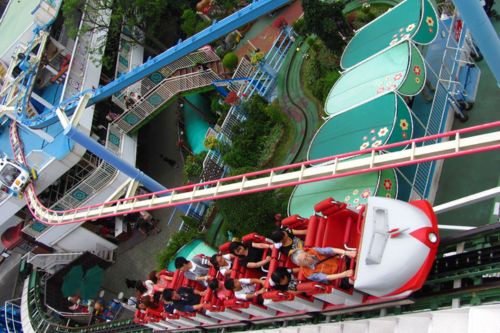
- Address: 2 Chome-28-1 Asakusa, Taito City, Tokyo 111-0032, Japan; Google Map
- Opening Hours: 10 AM – 6 PM
- Entrance Fee: ¥1,200 (Adults), ¥600 (Children and Seniors)
You must be familiar with Tokyo Disneyland and Tokyo DisneySea. But have you heard of Japan’s oldest amusement park, Asakusa Hanayashiki? Founded in 1983, this park has entertained visitors for over four decades. It was initially opened as a botanical garden before transforming to its present state.
Asakusa Hanayashiki is within a walking distance from Sensoji Temple and Asakusa Station. It has everything you would expect in an amusement park, such as a Ferris Wheel, Space Shot, 3-D theater, arcades, and souvenir shops. Also, don’t forget to try Japan’s oldest working roller coaster that takes riders on a 240-meter-long journey.
Buy Fake Food from Kappabashi
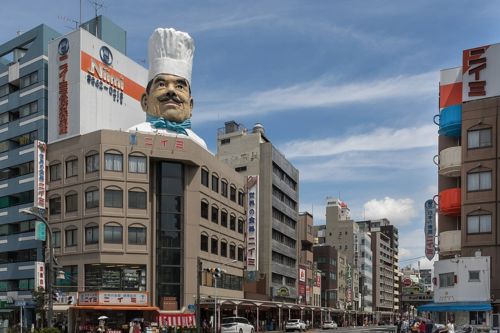
- Address: 3 Chome-18-2 Matsugaya, Taito City, Tokyo 110-0036, Japan; Google Map
- Opening Hours: 9 AM – 7 PM
- Things To Do: Shopping for kitchen-related items
Kitchen Town, aka Kappabashi Street, is an underrated Tokyo attraction with unique features. This place is a one-stop shop for buying all sorts of kitchen appliances, from pots, pans, stoves, and tableware to dining tables and chairs. Some renowned stores are Komatsuya, Kama-Asa, Dengama, Kanaya Brush, Yokoyama, and Sato Sample.
Another exciting feature of Kappabashi Street is plastic food. These fake food samples are made using wax and are displayed in almost every store on this street. They look so realistic that you won’t be able to tell the real food from the fake ones. At the end of your trip, you will buy one of these synthetic food samples to take back home.
Sip Matcha Tea at Hama-rikyu Gardens
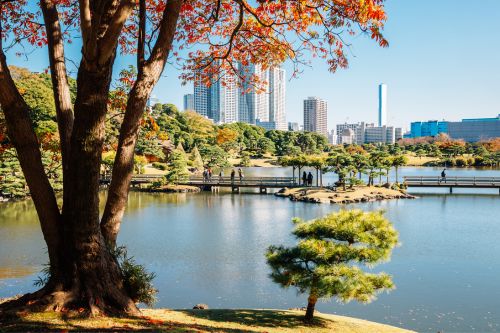
- Address: 1-1 Hamarikyuteien, Chuo City, Tokyo 104-0046, Japan; Google Map
- Opening Hours: 9 AM – 5 PM
- Entrance Fee: ¥300 (General public), ¥150 (Aged 65 and over)
You don’t always have to rush in Tokyo; you can relax and savor natural beauty at Hama-rikyu Gardens. It is one of the lesser-known parks in the city, and its origins date back to the 1940s. Moreover, this place is located at the mouth of the Sumida River and is easily accessible from the Shimbashi Station and Shiodome Station.
Visitors can explore the garden and watch cherry blossoms during spring. Another must-do is experiencing a tea ceremony. Hamari-kyu Gardens often hosts tea ceremonies with a master. Also, don’t forget to visit Nakajima teahouse and taste their craftsmanship. Sip your matcha tea nice and slow before ending your journey.
Spot Your Favorite Animals at Edogawa Natural Zoo

- Address: 3 Chome-2-1 Kitakasai, Edogawa City, Tokyo 134-0081, Japan; Google Map
- Opening Hours: 10 AM – 4:30 PM
- Entrance Fee: Free Entry
Looking for family-friendly things to do in Tokyo? Then, Edogawa Natural Zoo must be your destination. This admission-free attraction houses 630 animals of 58 species, such as red pandas, owls, redneck wallabies, squirrels, and Humboldt penguins. It also protects rare wildlife like Brown spider monkeys and ant bears.
Remember to drop by the kid-favorite zone, the Fureai Corner, where you can pet baby rabbits, guinea pigs, sheep, and goats. This place is only open on weekdays around 10:30 AM, 11 AM, 1:30 PM, and 2 PM. Moreover, visitors can buy souvenirs to take back home. Can badges cost ¥100 each, magnet ¥120, and mini towel ¥450.
Visit the Iconic Owl Cafe Tokyo Akiba Fukurou
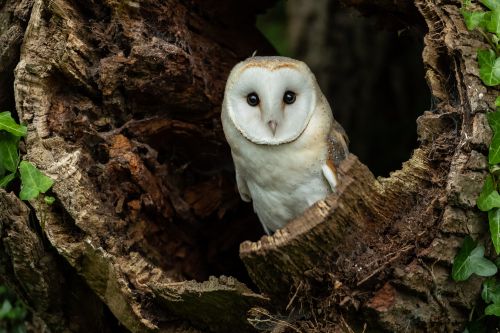
- Address: Japan, 101-0022 Tokyo, Chiyoda City, Kanda Neribeicho, 6; Google Map
- Opening Hours: 12 PM – 6 PM
- Social Media: Official Website, Official Instagram, Official Facebook, Official X
What could be a more non-touristy thing to do in Tokyo than visiting an owl cafe? You heard us right: Akihabara’s Owl Cafe Tokyo Akiba Fukurou is a unique animal cafe that allows guests to interact with a family of forty owls. It will be a different environment than your typical cat and dog cafes.
The Owl Cafe’s birds are all friendly and used to being handled. There are eagle owls, mid-size barn owls, striped owls, and scoop owls—furthermore, the staff hands out an informative folder that guides guests in interacting with the birds. The cafe only houses small groups at a time, so it’s better to make a reservation.
See What The Fuss Is All About Bank of Japan Currency Museum
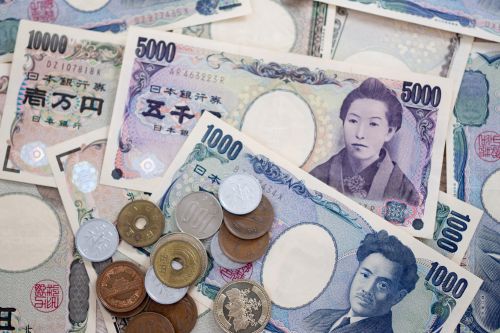
- Address: Japan, 103-0021 Tokyo, Chuo City, Nihonbashihongokucho, 1 Chome−3−1; Google Map
- Opening Hours: 9:30 AM – 4:30 PM
- Entrance Fee: Free Entry
Our next stop will be the iconic Bank of Japan Currency Museum. This museum is a perfect place to find information on Japan’s currency and currency-related historical and cultural materials for research. It displays actual gold coins (Oban) and the first Japanese notes issued during the Meiji period. You will see the transformation of Japanese money from ancient to current.
Visitors can learn about Japanese people’s way of using money and the prices of goods in the ancient period. Furthermore, this admission-free museum is conveniently located opposite the Bank Of Japan in Chuo City. It is only eight minutes from the Nihonbashi Station and a short distance from the Tokyo Station.
Get Lost in the Bamboo Forests of Todoroki Valley
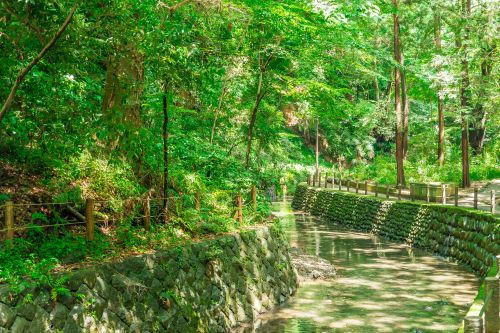
- Address: Setagaya City, Tokyo 158-0082; Google Map
- Opening Hours: 24/7/365
- Things To Do: Exploring Valley, Visiting Todoroki Ravine Park
Would you like to escape from the busy Tokyo City life to a peaceful valley? Then, look no further, as Todoroki Valley is conveniently located in Setagaya City and is accessible from Todoroki Station. This wooded valley is the perfect destination for nature lovers with its thick bamboo forests, a small river, and waterfalls.
Visitors can easily follow a jungle-like path and explore the valley at their own pace. They will come across many benches and seating spots where they can relax. There is also a tearoom called Setsugetsuka, offering green tea and kuzumochi cake. A few meters ahead lies Todoroki Fudosan Temple. Finally, you will reach Todoroki Ravine Park, a perfect picnic spot.
Unfortunately, some walking trails of Todoroki Valley are closed due to tree trimming. So, inquire before making your trip.
Tokyo is iconic, and the added non-touristy activities only add to its ever-present charm. Visitors will travel to a different space from the typical city atmosphere in our recommended hidden Tokyo attractions. This will change the scenario and allow travelers to enjoy a relatively peaceful environment.
Overall, we hope our handpicked non-touristy things to do in Tokyo were helpful for your expedition. Traveling is all about exploring new things and getting diverse experiences. So, leave your comfort zone and let yourself loose in this metropolitan city.
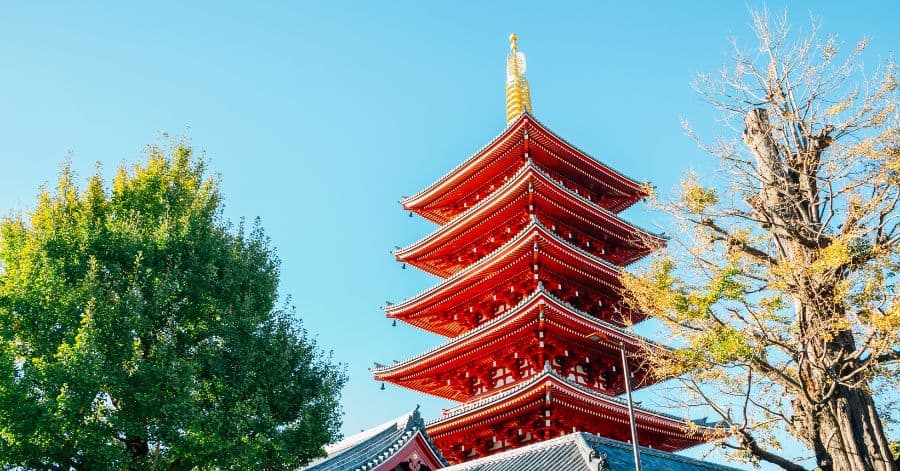
 See All Tours & Activities in Japan
See All Tours & Activities in Japan

